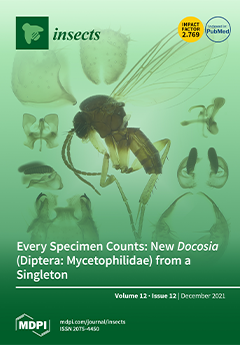Terrestrial slugs are a prominent agricultural pest worldwide. To mitigate the negative effects of chemical pest control, biological control involves the use of natural enemies to reduce the impact of target pests. Numerous insects are natural predators of slugs. This study evaluated potential of the predatory species,
Carabus elysii Thomson (Coleoptera: Carabidae) to biologically control the terrestrial slug,
Agriolimax agrestis. Laboratory experiments were conducted to investigate the functional response, searching efficiency, and interference effect of female and male
C. elysii adults regarding adult, immature, and juvenile
A. agrestis individuals. The results show that both female and male ground beetle adults are functionally capable of preying on different sizes of terrestrial slugs.
C. elysii exhibited Holling type II functional responses when preying on
A. agrestis. The maximum daily prey consumption was 35.5 juveniles, 25.1 immatures, and 17.1 adults for adult females and 26.9 juveniles, 20.3 immatures, and 11.6 adults for adult males. The searching efficiency of female
C. elysii adults regarding
A. agrestis was always higher than that of male adults for identical ages and densities of
A. agrestis. Moreover, the predation of
C. elysii on slugs was affected by predator density. The disturbance coefficient of male
C. elysii were the highest on adult
A. agrestis. The results of this study suggest that female
C. elysii exhibit a high potential for the biological control of
A. agrestis.
Full article






